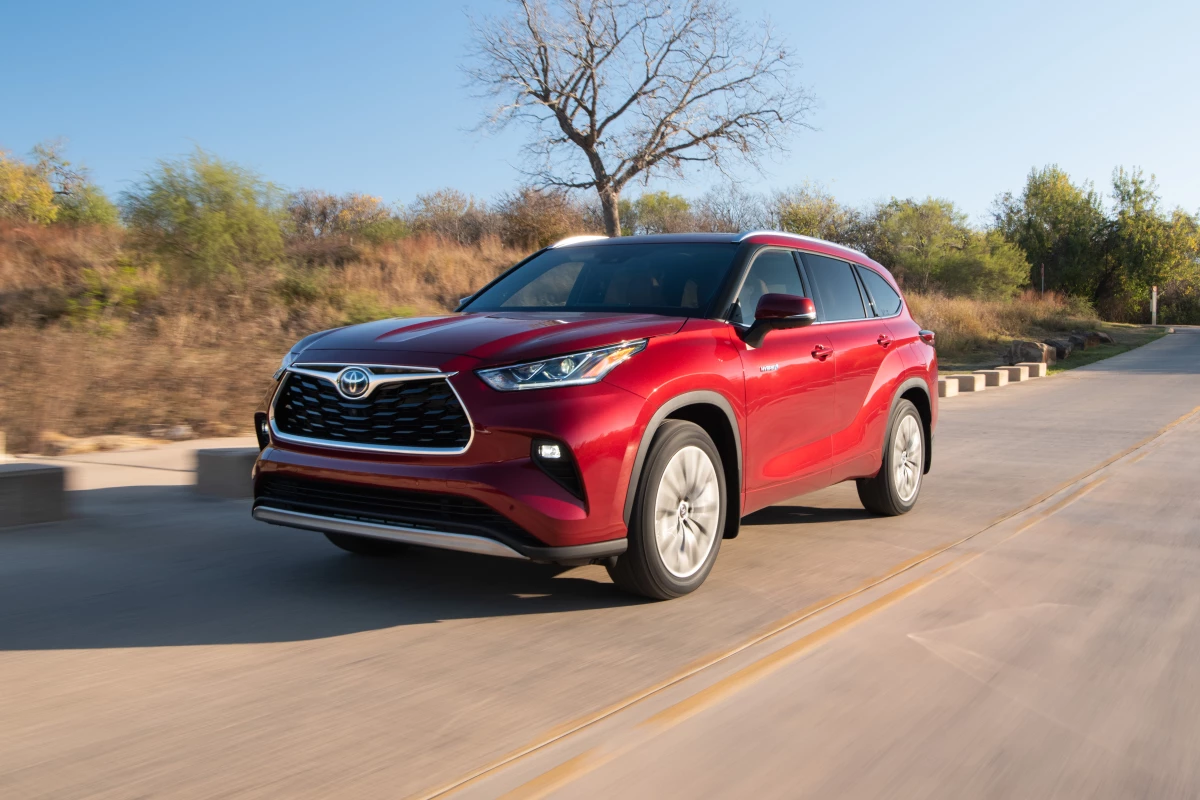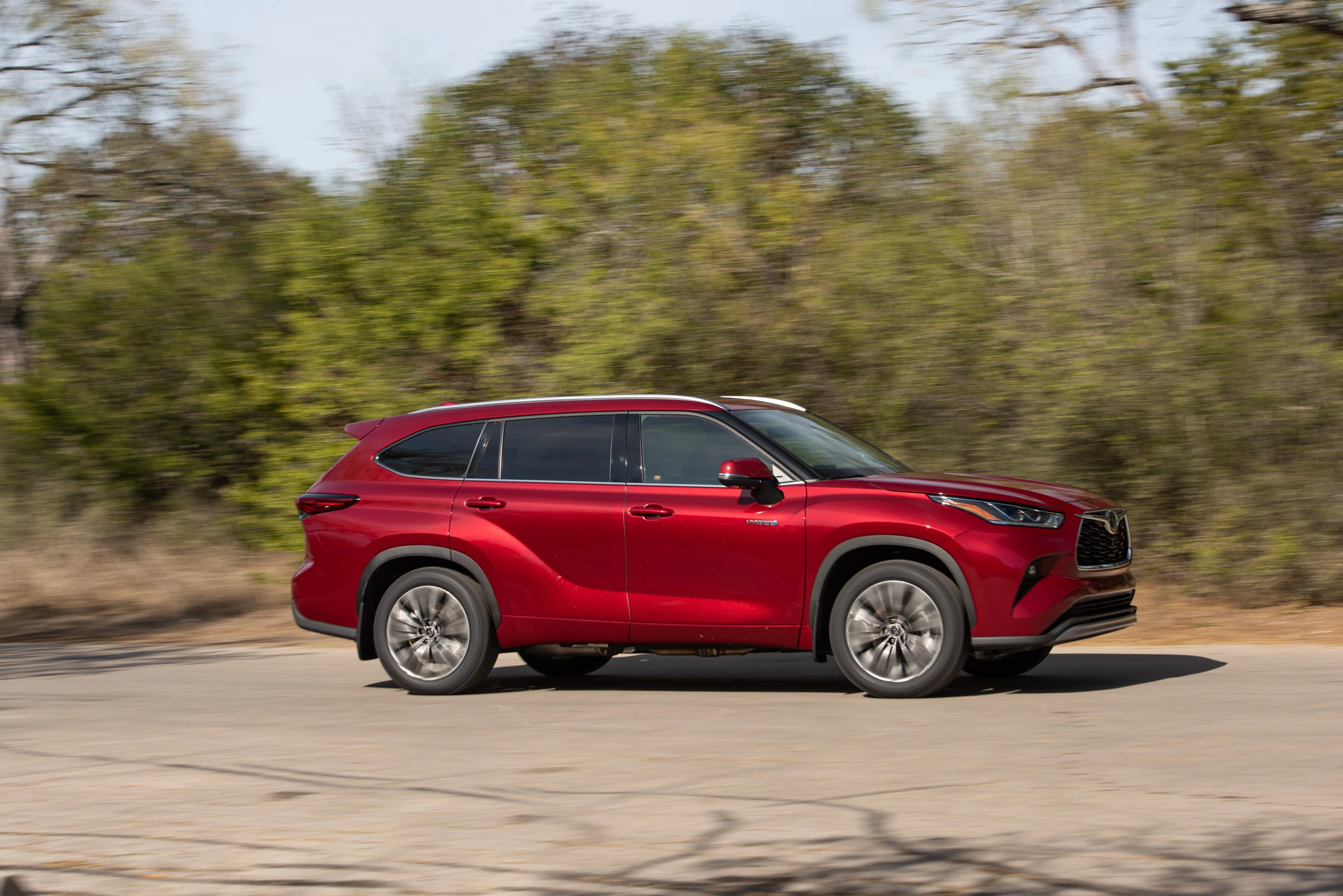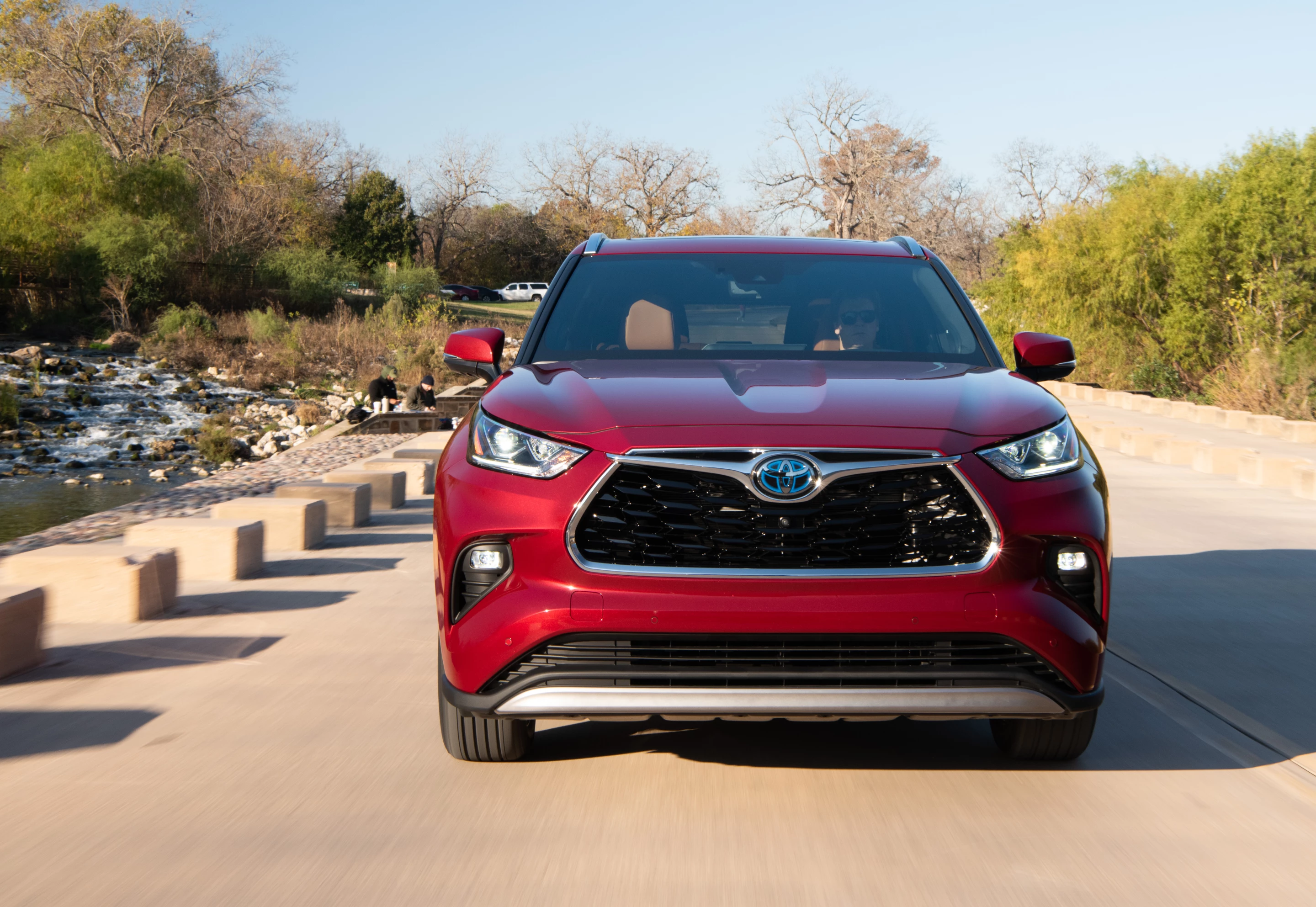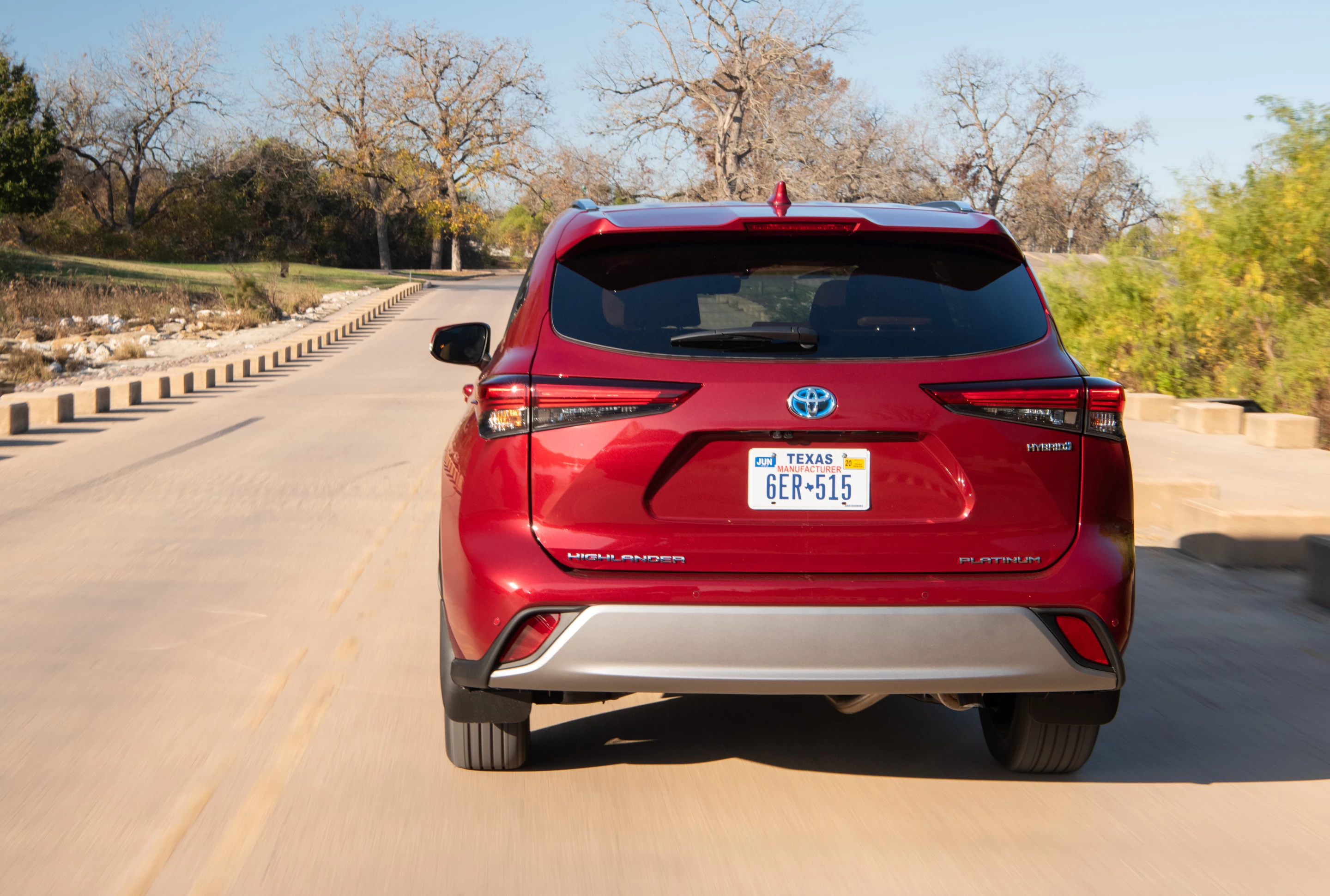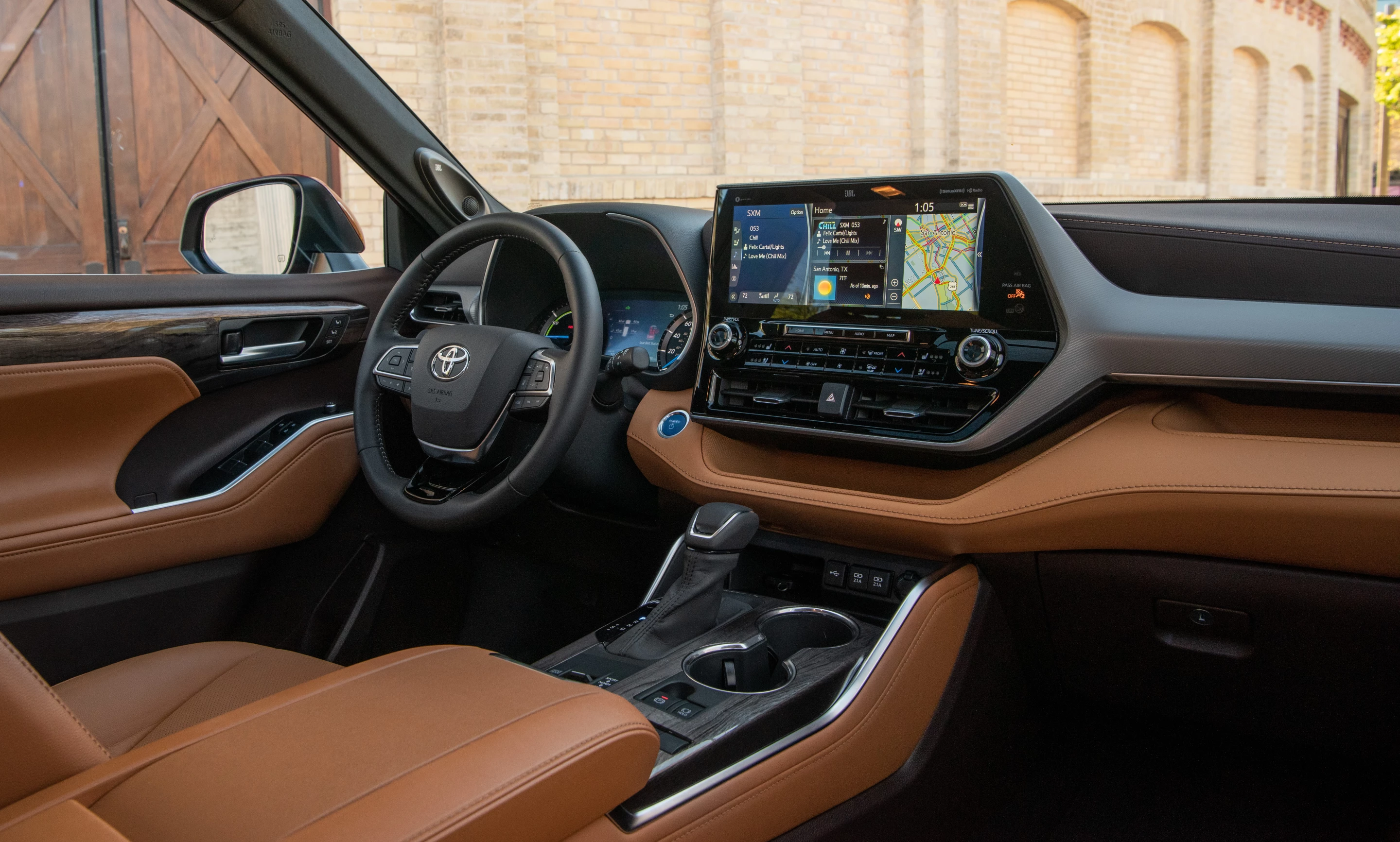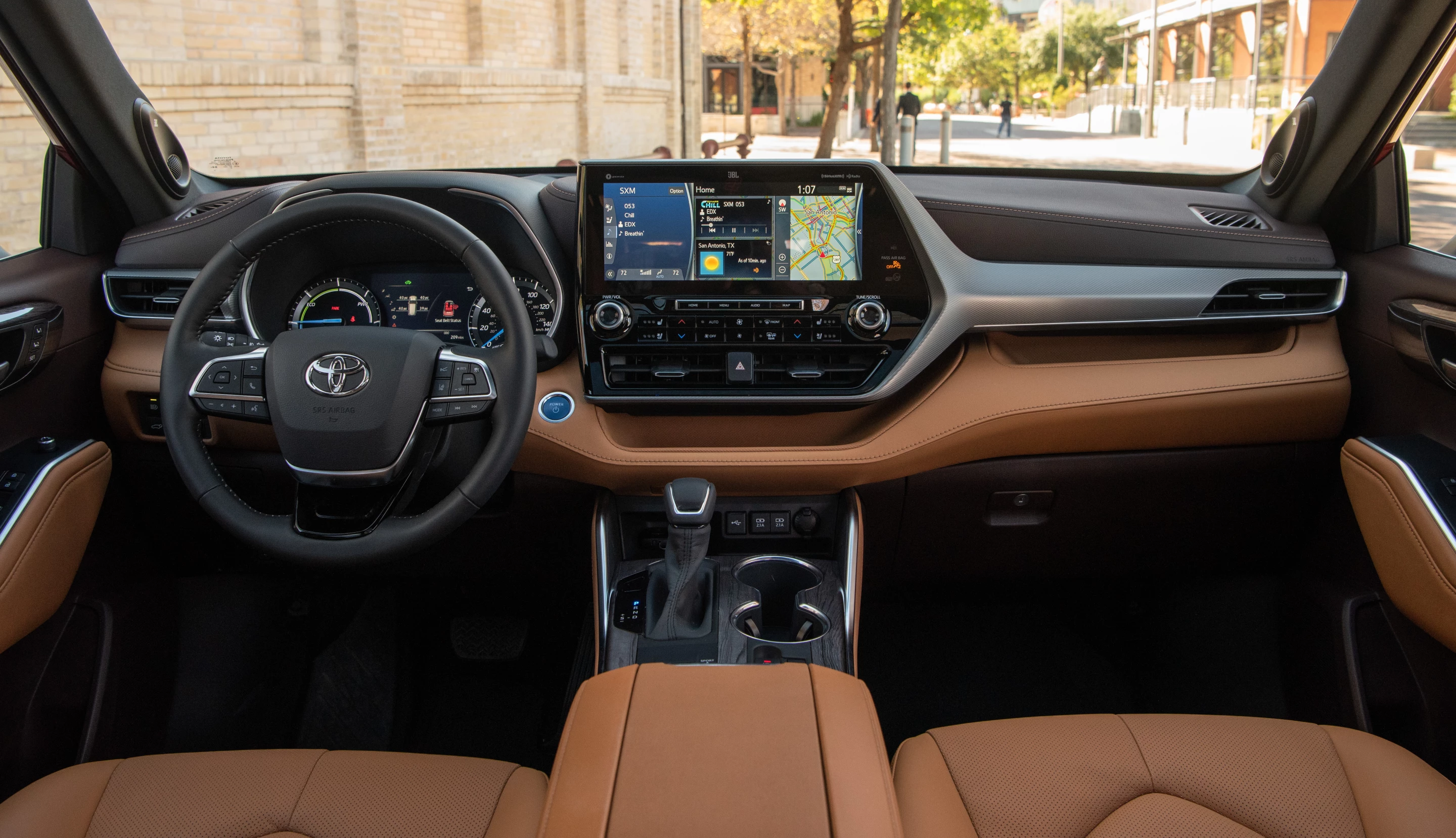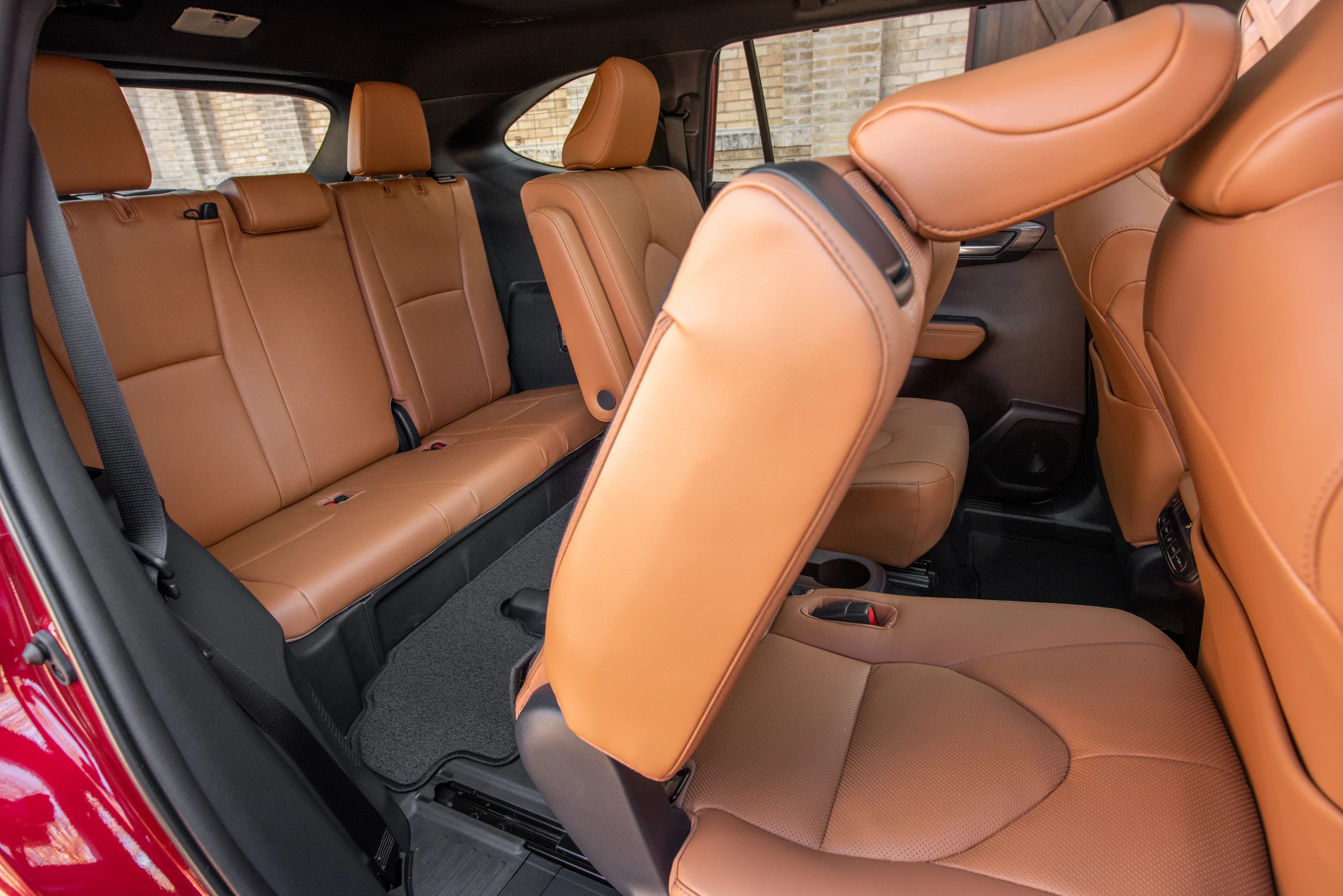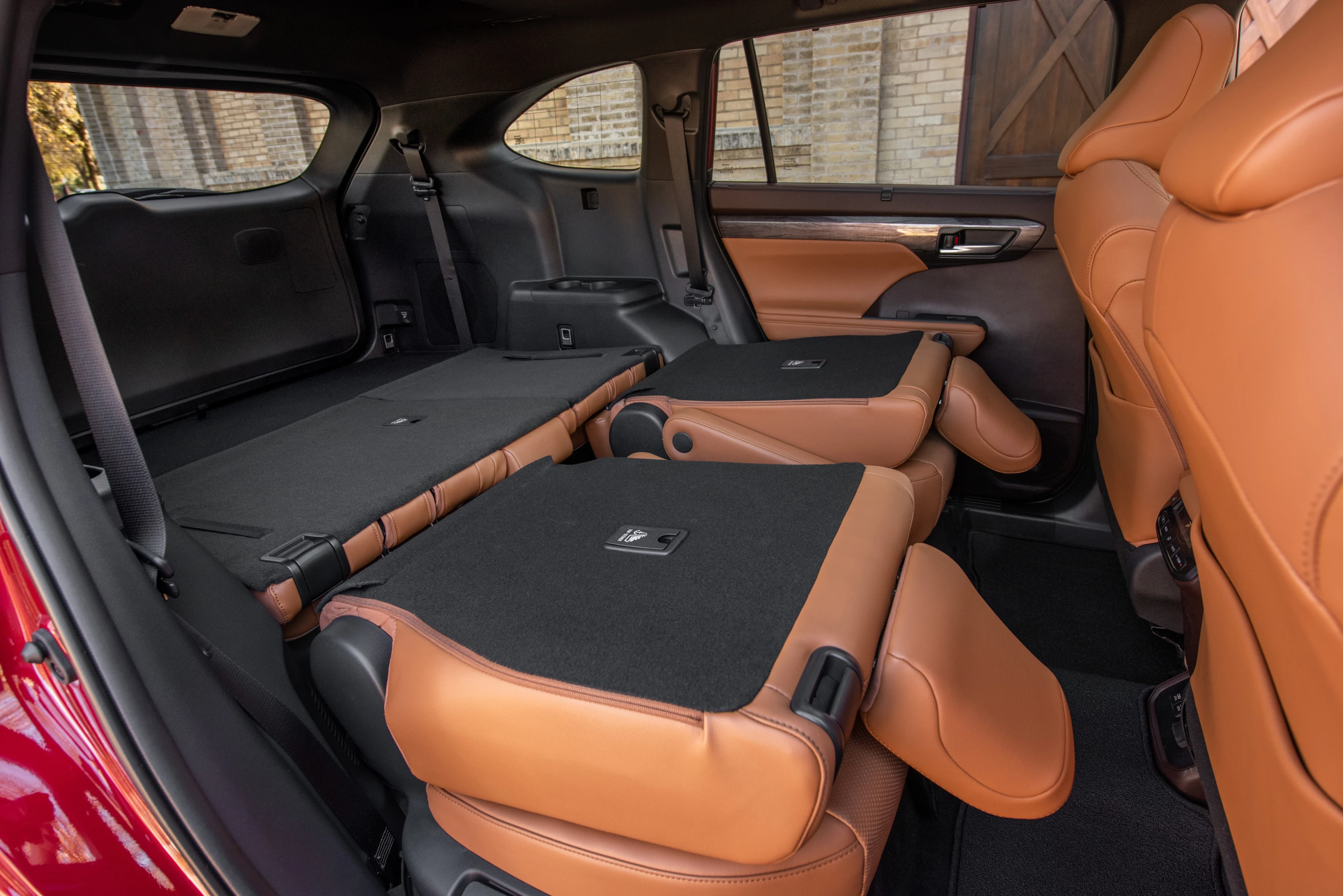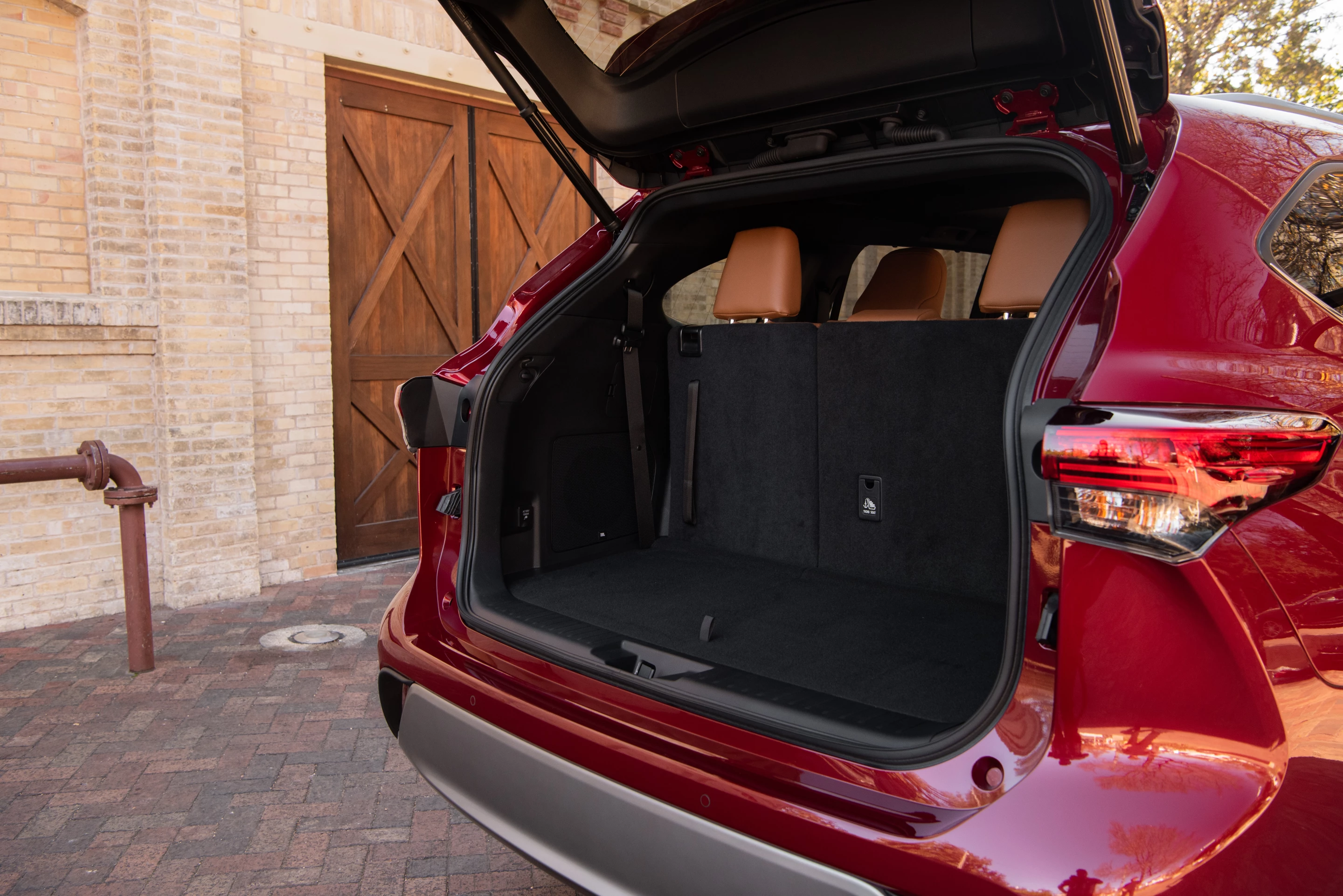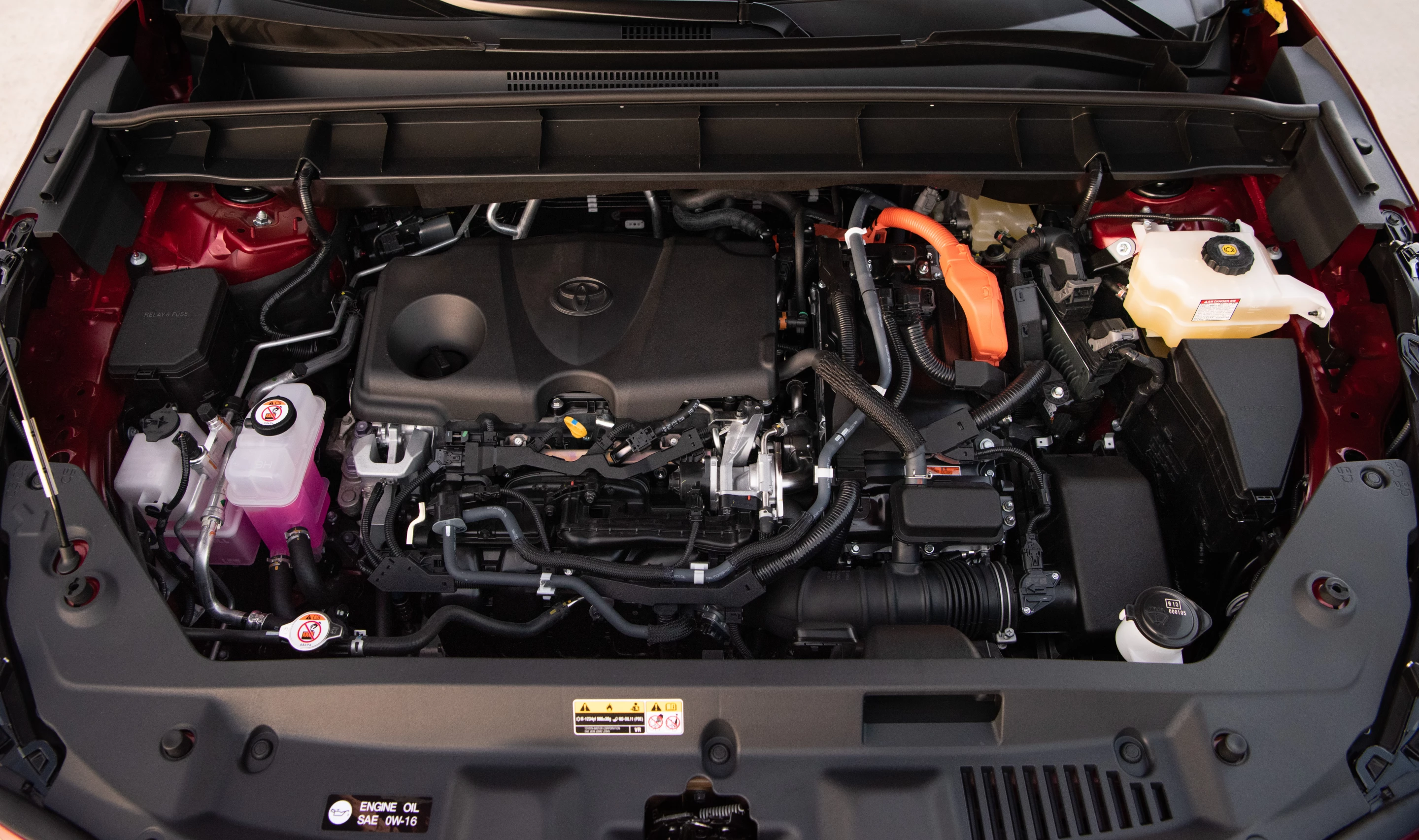For the 2020 model year, Toyota totally revamped the Highlander three-row crossover. As one of the make’s best sellers, the vehicle enters its fourth generation with a mixture of old and new in its design. Significantly, for the hybrid option, the Highlander sheds some cylinders and gains some MPGs as a result.
At a Glance
- Hybrid powertrain uses a four-cylinder engine, dropping the V6 it had before and losing some output as a result.
- Fuel economy now a solid 35-36 mpg combined, a big leap for a vehicle this size.
- New redesign adds 2 inches to the Highlander’s length, but none of that goes to the third row, which remains cramped and difficult to access.
- Interior is a grab bag of hits and misses for ergonomics, but keeps the Highlander’s penchant for abundant storage and versatility.
The complete ground-up upgrade of the Highlander was much-needed, as the popular crossover began to see heavy competition from some excellent contenders in the midsized three-row SUV segment. With the new 2020 model, Toyota made a light refresh for the exterior of the Highlander, simplifying body lines and adding a little curvature to the crossover. The hood lines, body proportions, and silhouette of the new Highlander remain largely the same as they were in the third generation of the Toyota, but the grille, body panels, and rear fascia are all more sleek and modern when compared to the previous-gen Highlander.

On the inside, the 2020 Toyota Highlander Hybrid sees a larger cargo area thanks to a couple of inches added to the vehicle’s overall length. Passenger room remains as it was in 2019, which means the front and second rows are extremely roomy while the third row is cramped and difficult to access. Interior storage is also very good in the new Highlander, with plenty of stash points, cubbies, and hideaways for various items on the go.
Materials quality and general layout in the new Highlander are almost identical to what was found in the previous generation of the crossover. That’s a good and a bad thing. The previous-gen Highlander was lauded for its solid-feeling interior materials choices, its comfort, and its roominess. It was not considered terribly ergonomic, with USB plugs often missing or hard to find (especially in the second row) and third row access requiring yoga mastery. This mixed return continues with the 2020 model year.
Technology in the new Highlander Hybrid is improved, however, as Toyota slowly but surely upgrades infotainment to add industry standards like Apple CarPlay and Android Auto, as well as a more modern user interface design. The new, larger screen (available in upper trim levels) is massive and easy to see, but not necessarily easier to use, and it does dominate the front dash design-wise. Safety technology in the Highlander is top notch, with most advanced safety items like forward collision warning and braking being standard features in every model.
Big news for this new-generation Highlander is in the powertrain for the Hybrid model. Toyota has dropped the V6 used before, which was a standard engine in the gasoline-only Highlander, in favor of a smaller and less powerful 2.5-liter four-cylinder. That engine is in several Toyota vehicles and has often been mated to the Hybrid Synergy Drive system as is the case in this Highlander. The new setup means about 60 less horsepower (44.7 kW) compared to the outgoing-generation Highlander Hybrid, but boosts fuel economy by about 8 mpg (29.4 l/100km) on the 2020 Highlander Hybrid’s combined rating. Total fuel savings will depend on drivetrain, as both front-wheel and all-wheel drive are available in every Highlander Hybrid trim.

After a week with the new Highlander in its Hybrid model format, we found that this Toyota remains a good choice for shoppers looking in the midsized category below the usual bigness of the three-row options available. The vehicle’s difficult third row is no more difficult than are those of competing options like the Mazda CX-9, while the Highlander itself is not as large as the more comfortable three-row options such as the Hyundai Palisade. Like the Mazda, we’d consider the third row in the Highlander to be an occasional-use option rather than a full-time deployment for family use. Taken that way, it’s a versatility boost. The larger cargo space thus makes more sense.
In terms of everyday usability, the 2020 Toyota Highlander Hybrid offers a lot of things to be happy about. There are more upscale and more ergonomic options on the market, of course, but they’re either larger or don’t have a fuel efficient option. Usually both. With the Highlander Hybrid, fuel economy tops out at 36 mpg in the city and 35 mpg on the highway (6.5 and 6.7 l/100km respectively) in front-wheel drive format. That’s a full 6 mpg more in highway MPG than in the 2020 Highlander gasoline model, and 7 more than the previous generation’s hybrid model. In the real world, our all-wheel drive model Highlander Hybrid managed to pull 35.5 mpg on the highway in our testing – which is better than expected.
The 2020 Toyota Highlander in its Hybrid models is definitely competitive. Prices start at US$38,200 for the crossover.
Product Page: 2020 Toyota Highlander Hybrid
